I love going out to my garden, picking some peas right off the vine, and eating them right there. My uncle taught me how to grow peas a long time ago, and I enjoy them every year.
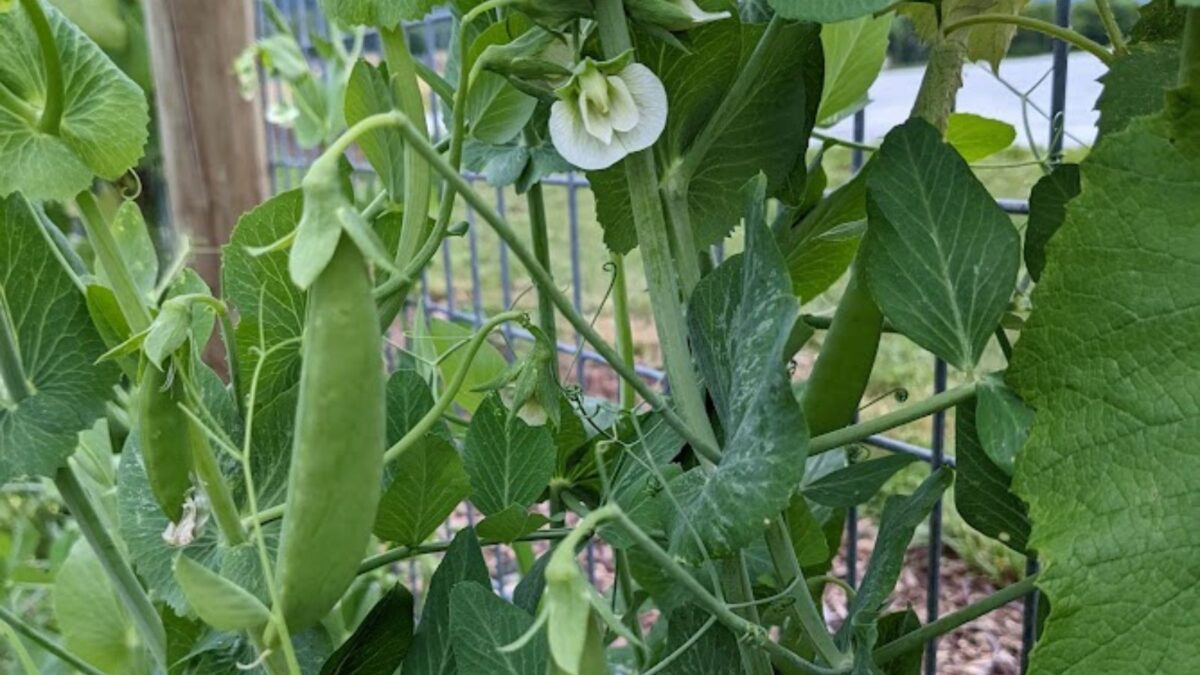
How to Grow Peas
What is the best time to plant peas?
Peas like cold weather and don’t do very well in hot temperatures. Plant in the spring as soon as the soil is workable, even if you still expect some snow (light freezes don’t bother peas).
You can also plant in early fall and harvest right up till frost. Just make sure to count back the days from sowing till harvest and plant with enough time to let your peas mature.
If you’re surprised by an early frost, be prepared to throw a frost blanket on your peas. This works both at the beginning of the season, when the pea plants are fragile or at the end of fall to extend the season.
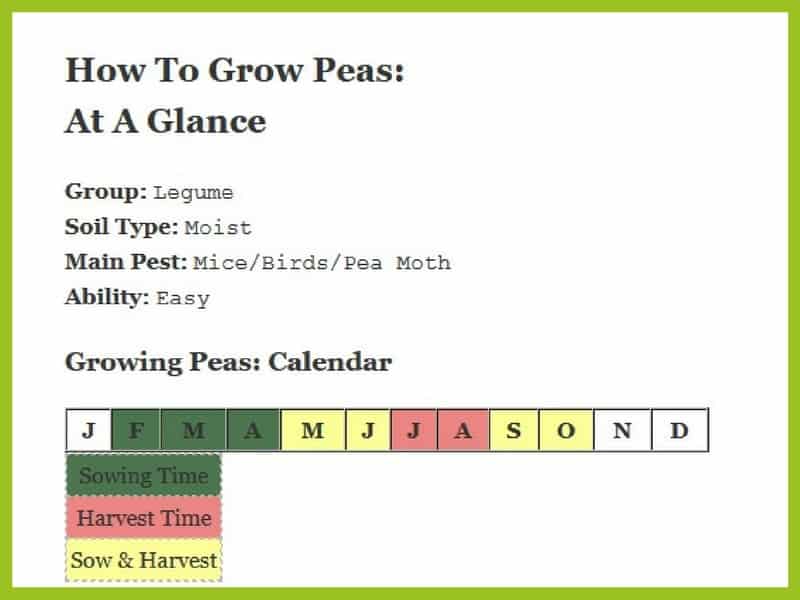
The Best Soil For Peas
As peas belong to the legume group of vegetables, they can provide their own nitrates by converting nitrogen from the atmosphere. That means you don’t need to provide much for the soil you plant your peas in.
However, they do like to have moist but well-drained soil. Ideally, you should dig some organic matter into the soil to help with water retention. I prefer leaf mold and my own garden compost.
Mulching around the pea plants before the summer can help to help the soil to remain moist as the weather warms up. It’ll also keep weeds away.
How To Grow Peas
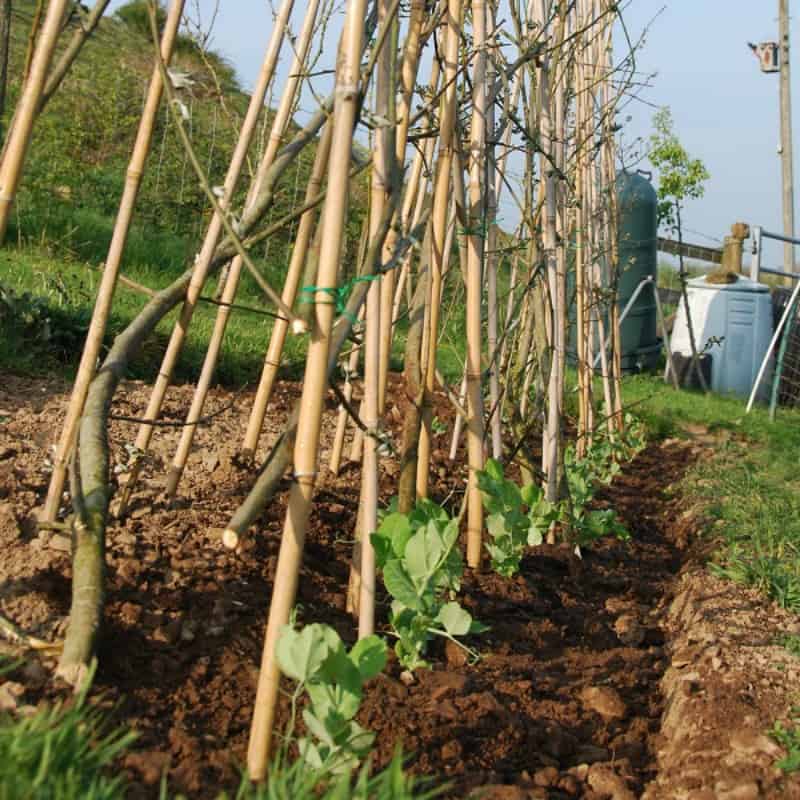
Plant your peas early in the spring, following the instructions on your seed packet. I like to plant peas by a railing we have going to our basement. This gives the peas something to climb on without me having to do anything else.
If you don’t have a fence or trellis to plant your peas next to, add some stakes when you sow your pea seeds. This way, you don’t disrupt them later once they start growing.
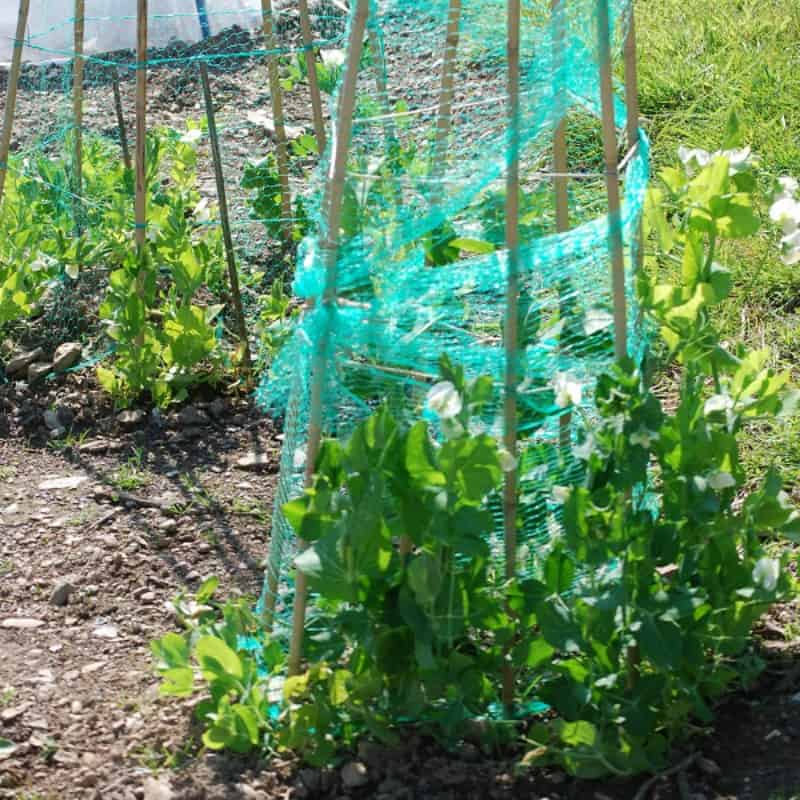
If you plant peas in rows in your raised bed garden, sow seeds about 5 to 6 inches apart and the next row about a foot distance. When you plant in rows, it’s best if you stagger the plants.
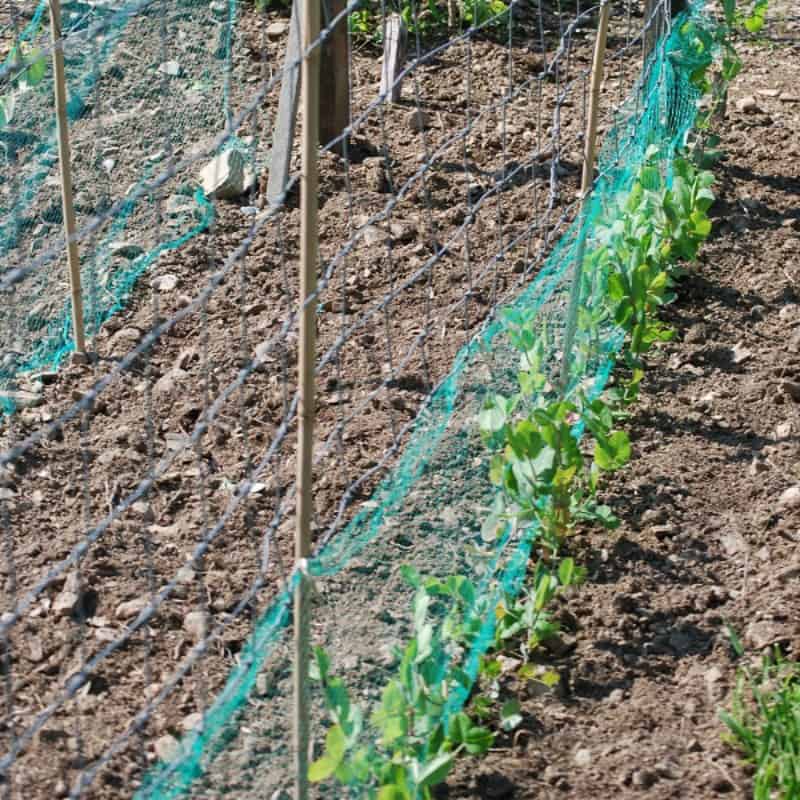
Sowing around late February will provide a crop as early as May.
Different Types Of Peas
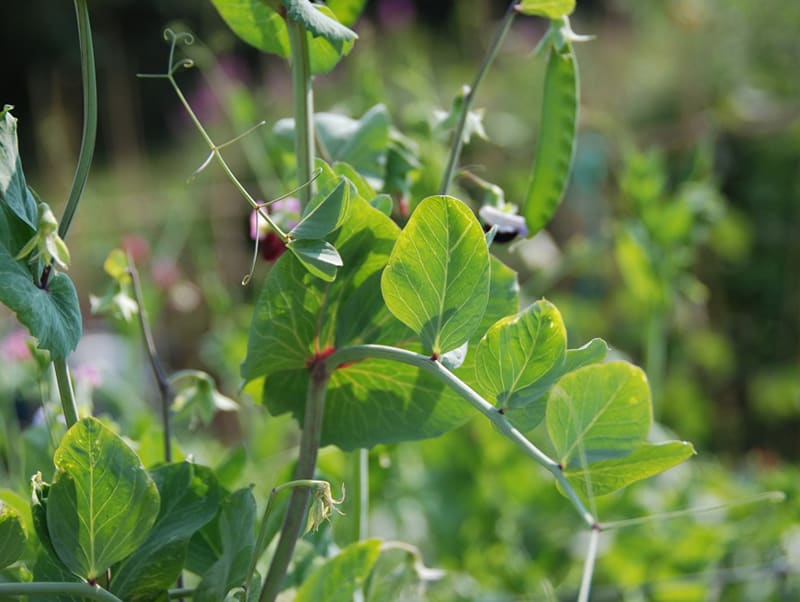
Wrinkled peas
There are several different types of peas. The most common, the wrinkled or marrowfat pea, can be grown as small dwarf varieties or tall climbers reaching up to 6 feet.
Wrinkled peas can also have different cropping times, from first earlies that take only 11 weeks to produce pods to main crop peas that take up to 15 to 16 weeks to mature.
Wrinkled peas are not hardy, so you need to avoid any frost. Sow directly under a cloche or in modules under glass during March and April for a crop in June or July. For later crops, show up until the end of June.
Dwarf varieties will need a twig or cane for support, while taller climbing varieties will need a frame and net to grow.
Snow peas, also known as mange tout peas (“eat all” in French)
These peas are very flat, and the pods are edible, both raw and cooked. Mange touts are whole pod peas and can also be known as Chinese peas. Used in Chinese cooking, they add vibrant color and some crunch to rice and stir-fries. YUM!
English peas
These are your common peas, the kind you buy at the store in the frozen section. The pods are not edible, and you must wait until maturity to harvest and use them. They need to be shelled before use.
English peas make delicious cream soups and are great additions to rice.
Sugar snap peas
Looking like a breed between English and snow peas, the pods of these peas are edible, even though you’ll need to wait a bit for them to grow and mature.
Petit pois peas
Petit pois are smaller, finer-tasting peas. This round variety of peas is hardier and can be sown before the last frost.
Pea Pests And Diseases
Peas are reasonably trouble-free. One of the more common pea pests is the pea moth; it can deposit its eggs into the flower, and it will turn into a maggot that eats into the pea.
To find out if you have pea moth, drop shelled peas into cold salty water, and the maggot will float off. If your peas are affected, cover the plant with fleece row cover as soon as flowering starts.
Mice and birds can also cause problems by taking the sown dried peas.
How To Harvest Peas
Peas mature from the bottom of the plant, so start to pick there and keep picking as soon as peas are ready. This will ensure that the plant continues to crop.
Peas eaten in pods should be picked as soon as they are the perfect size, while peas that need shelling should be left to swell until the pod feels tight and well-rounded.
Cooking With Peas
Naturally, sweet peas don’t stay that way long after you pick them. The sugar starts to turn to starch as soon as you pick them, so eat or freeze peas as soon as they are picked (here’s some help with freezing produce).
They are very nutritious, providing vitamins C, A, K, and B6 and thiamine, iron, magnesium, and riboflavin.
Until the 17th century, peas were simply dried and added to stews; of course, drying is a good way of storing peas for winter.
But today, peas have a much wider repertoire in soups, salads, and side dishes, so please don’t just boil your peas.
Dishes like pea puree are common on some of the best restaurant menus, and chefs like Jamie Oliver have made snacks such as lettuce and pea soup a big hit.
And, of course, don’t miss out on the opportunity of a Vitamin boost by adding raw peas to salads; uncooked peas have three times the Vitamin C.
Knowing how to grow peas will encourage you to try growing some this year. You’ll love them!
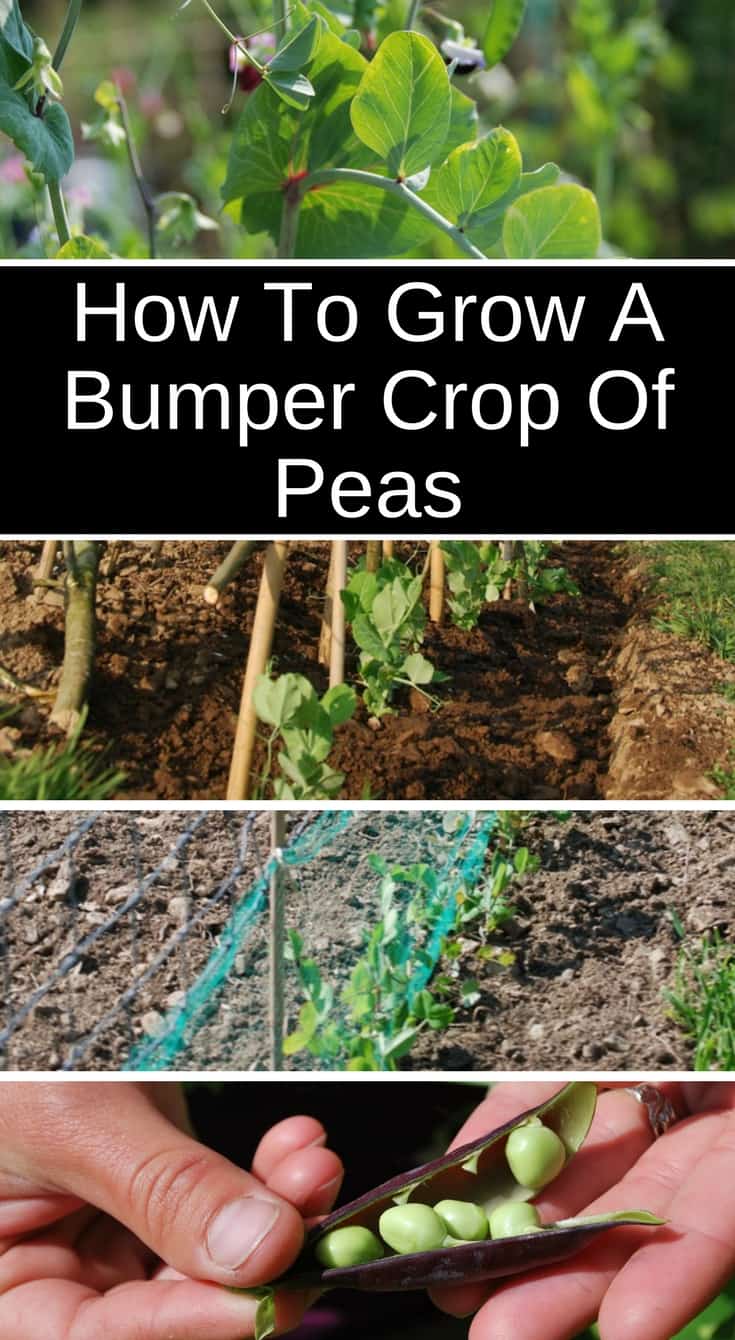

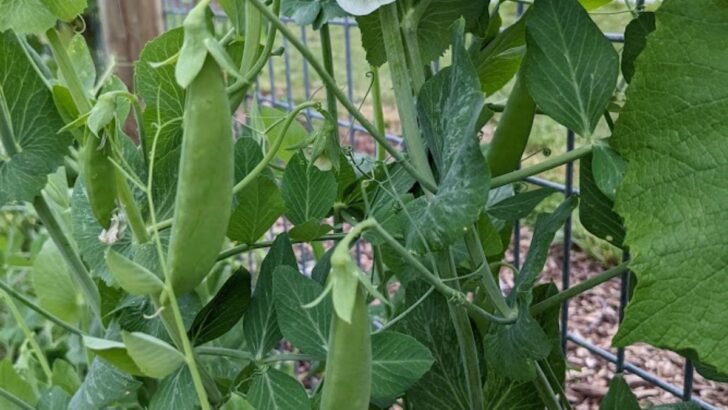

How To Grow Legumes For Food And To Increase Soil Nitrogen
Thursday 3rd of August 2023
[…] Garden peas, there is nothing quite like homegrown peas! Eat when fresh, as the fruit starts to turn sugar into carbohydrates as soon as they are picked. Fresher is sweeter. Smaller varieties are known as petit pois. How to grow peas. […]
13 Best Companion Plants For Carrots (And 4 To Avoid)
Saturday 15th of July 2023
[…] Peas are easy to grow: check out our quick guide to growing peas. […]
8 Best Companion Plants For Squash (And 4 To Avoid)
Wednesday 21st of December 2022
[…] as a companion is that they’re one of the earliest crops to go in the garden (here’s how to grow peas), so by time the squash plants begin to spread out, the peas have finished producing and can be […]
11 Best Companion Plants For Corn (And 4 To Avoid)
Tuesday 6th of September 2022
[…] Like beans, peas fix nitrogen in the soil, providing an essential nutrient for healthy corn growth. I’ve also found that corn, planted a month or two after spring peas, grows up to provide cooling shade that allows the well-established peas to continue growing lushly and producing for several weeks past their usual season end. Learn more about growing peas. […]
12 Best Companion Plants For Cabbage (And 5 To Avoid)
Monday 16th of May 2022
[…] Here’s how to grow peas. […]